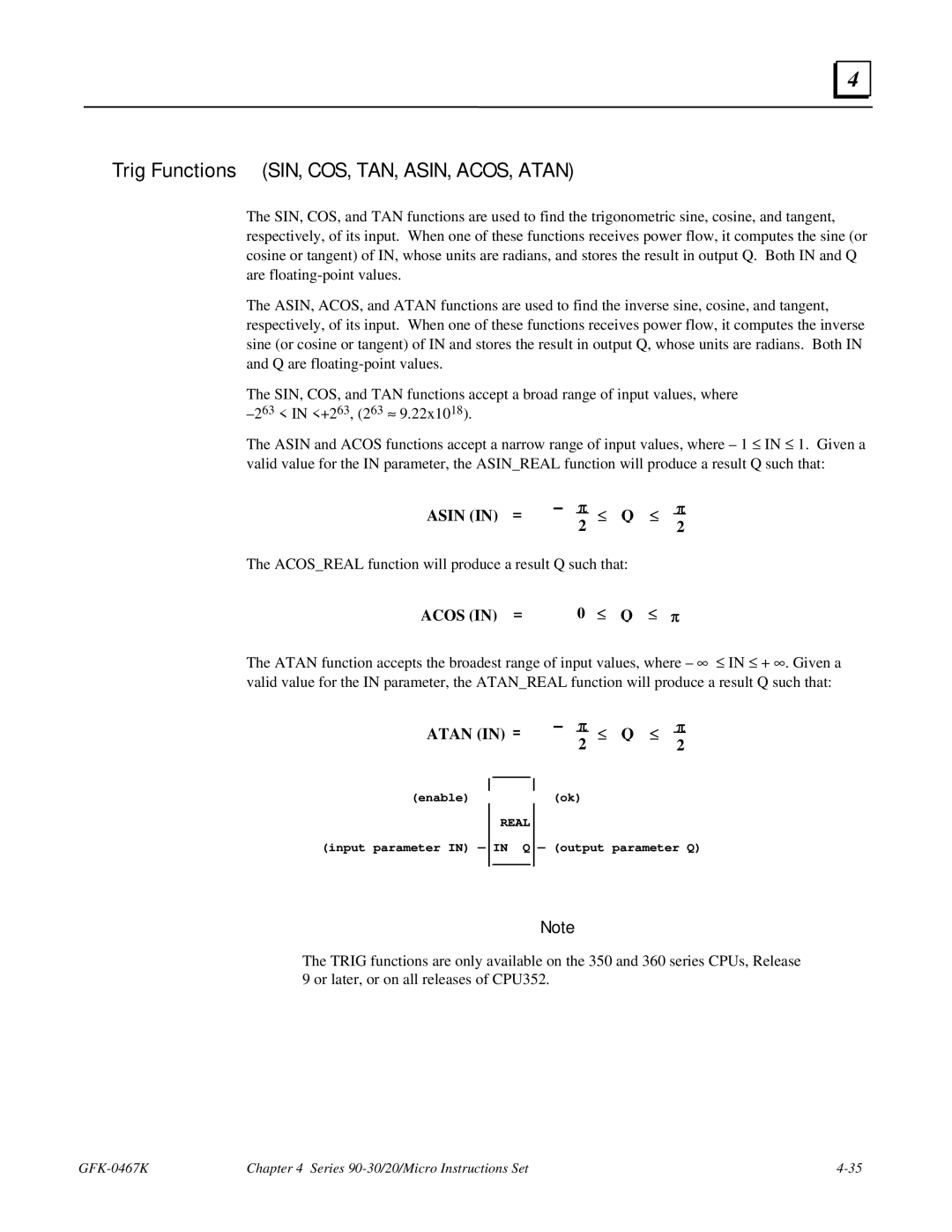
4 |
Trig Functions (SIN, COS, TAN, ASIN, ACOS, ATAN)
The SIN, COS, and TAN functions are used to find the trigonometric sine, cosine, and tangent, respectively, of its input. When one of these functions receives power flow, it computes the sine (or cosine or tangent) of IN, whose units are radians, and stores the result in output Q. Both IN and Q are
The ASIN, ACOS, and ATAN functions are used to find the inverse sine, cosine, and tangent, respectively, of its input. When one of these functions receives power flow, it computes the inverse sine (or cosine or tangent) of IN and stores the result in output Q, whose units are radians. Both IN and Q are
The SIN, COS, and TAN functions accept a broad range of input values, where
The ASIN and ACOS functions accept a narrow range of input values, where – 1 ≤ IN ≤ 1. Given a valid value for the IN parameter, the ASIN_REAL function will produce a result Q such that:
ASIN (IN) = | π | ≤ Q | ≤ | π |
| 2 |
|
| 2 |
The ACOS_REAL function will produce a result Q such that:
ACOS (IN) = | 0 ≤ Q ≤ π |
The ATAN function accepts the broadest range of input values, where – ∞ ≤ IN ≤ + ∞. Given a valid value for the IN parameter, the ATAN_REAL function will produce a result Q such that:
ATAN (IN) = | π | ≤ Q | ≤ | π |
| 2 |
|
| 2 |
_____ |
|
|
| |
|
|
| ||
(enable) | (ok) |
|
|
|
|
|
| ||
REAL |
|
|
| |
|
|
| ||
(input parameter IN) | Q— (output parameter Q) | |||
_____
Note
The TRIG functions are only available on the 350 and 360 series CPUs, Release 9 or later, or on all releases of CPU352.
Chapter 4 Series |
